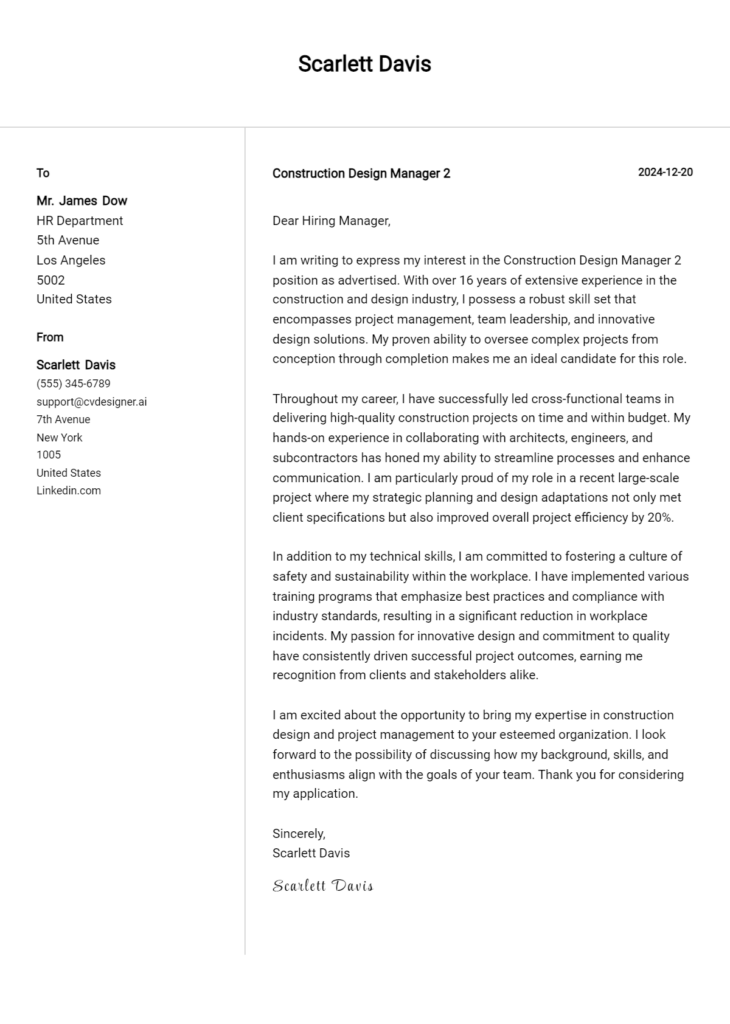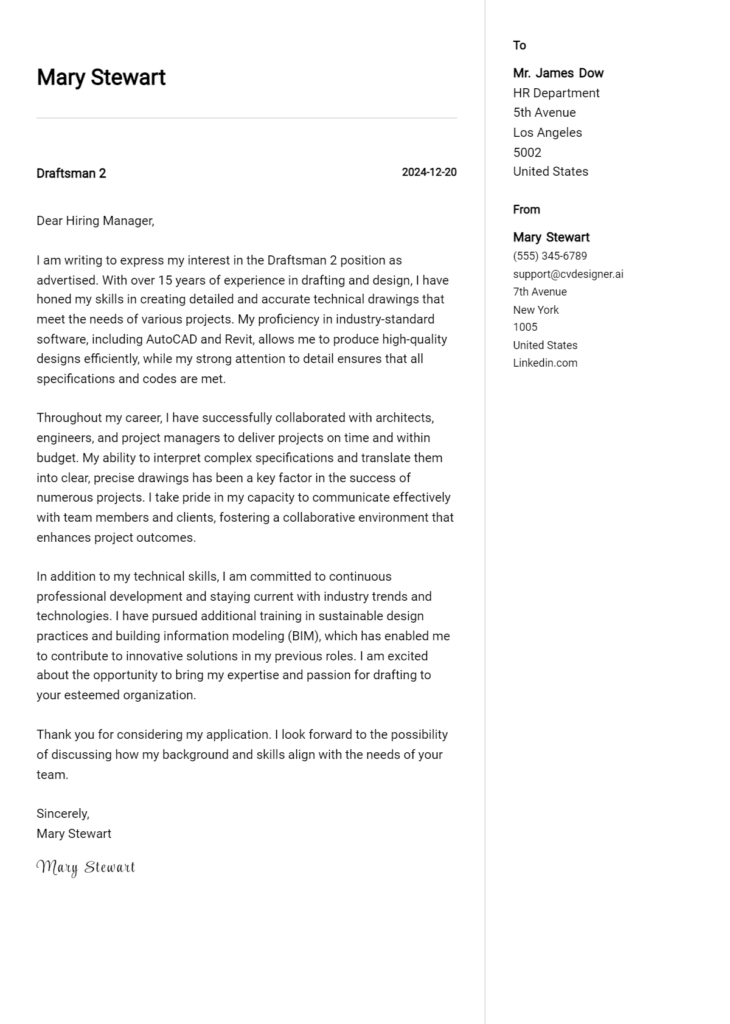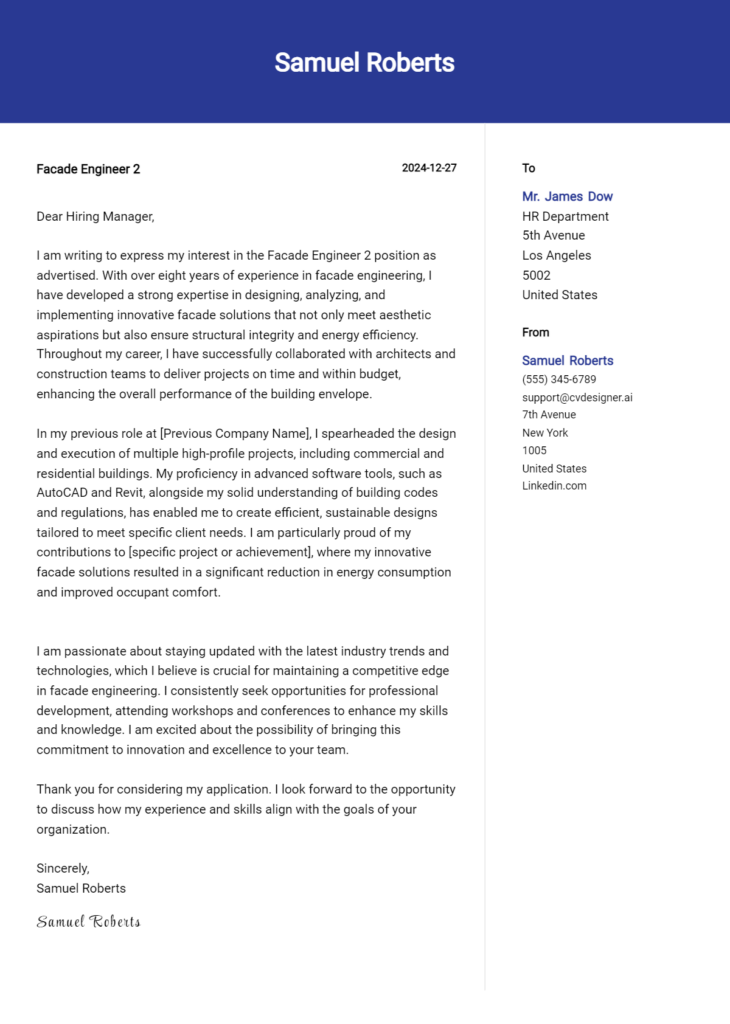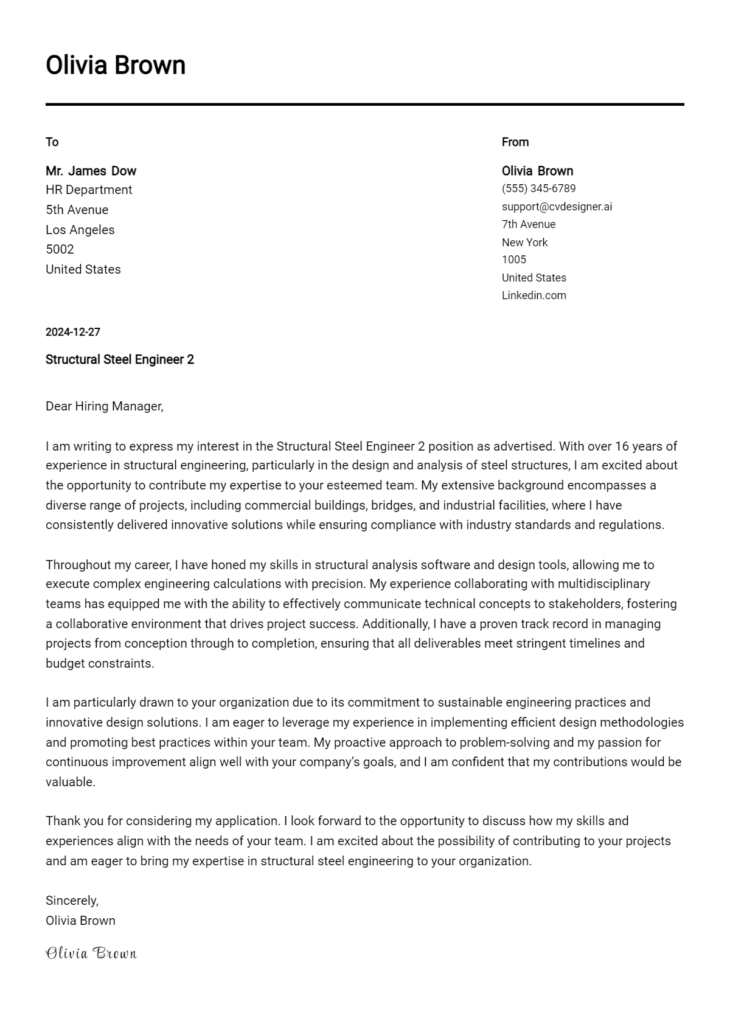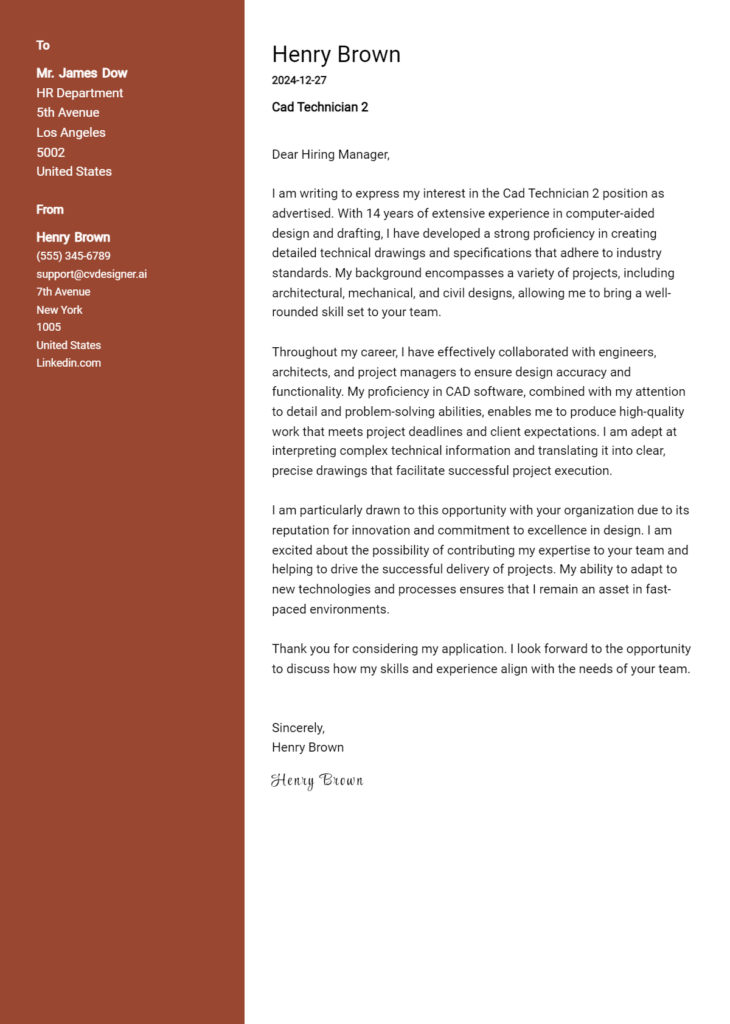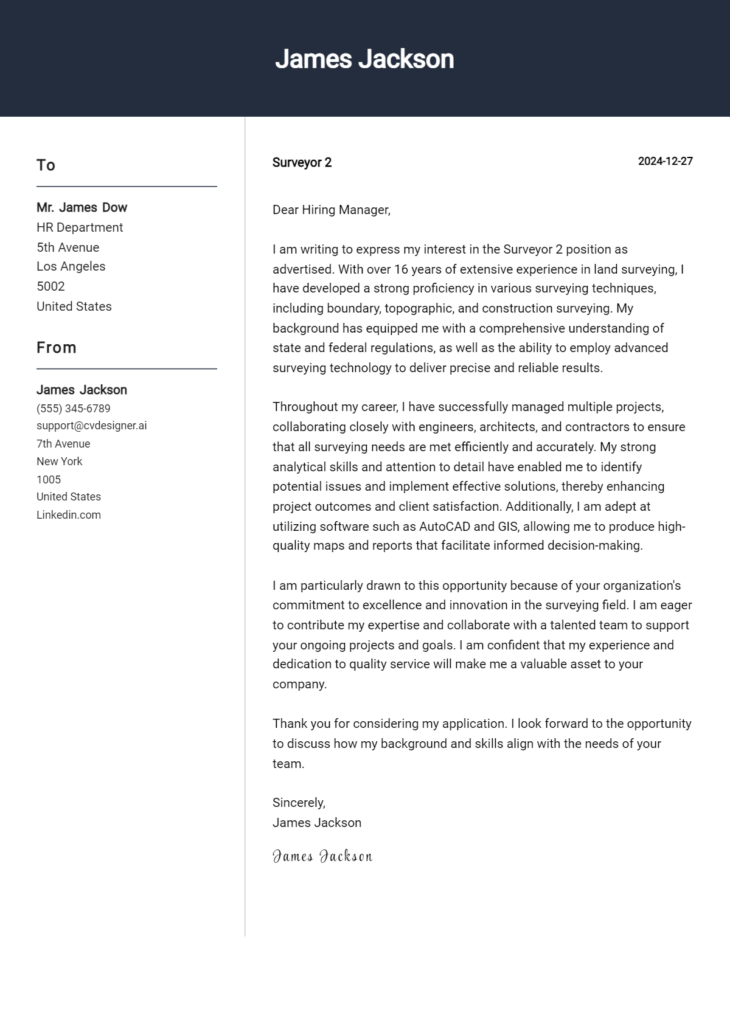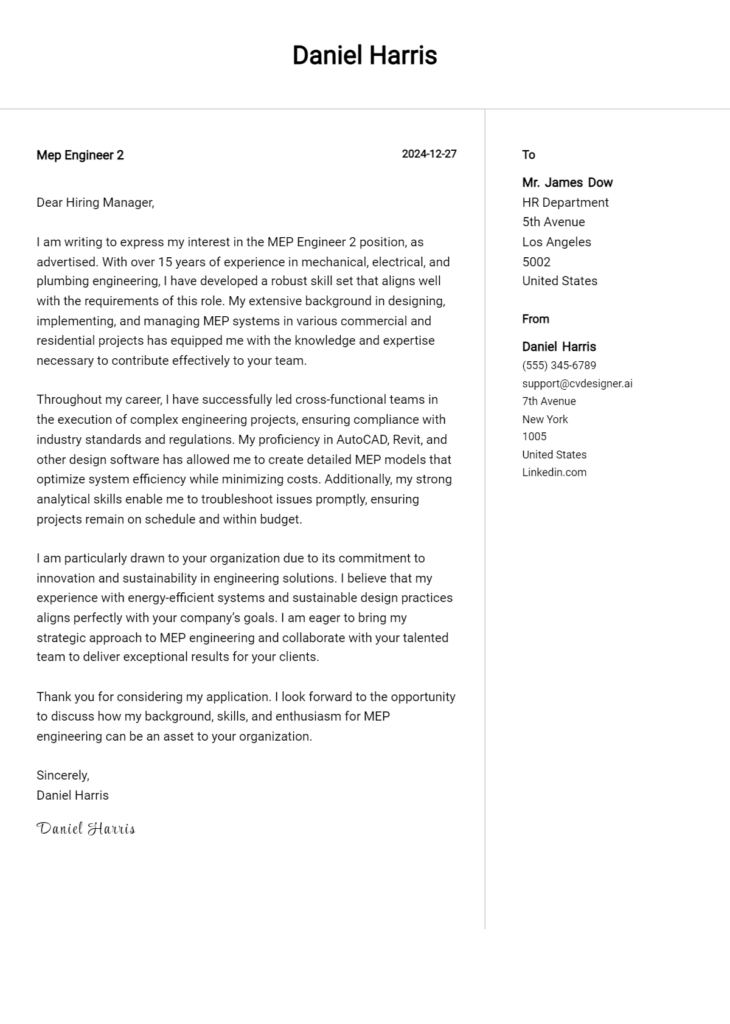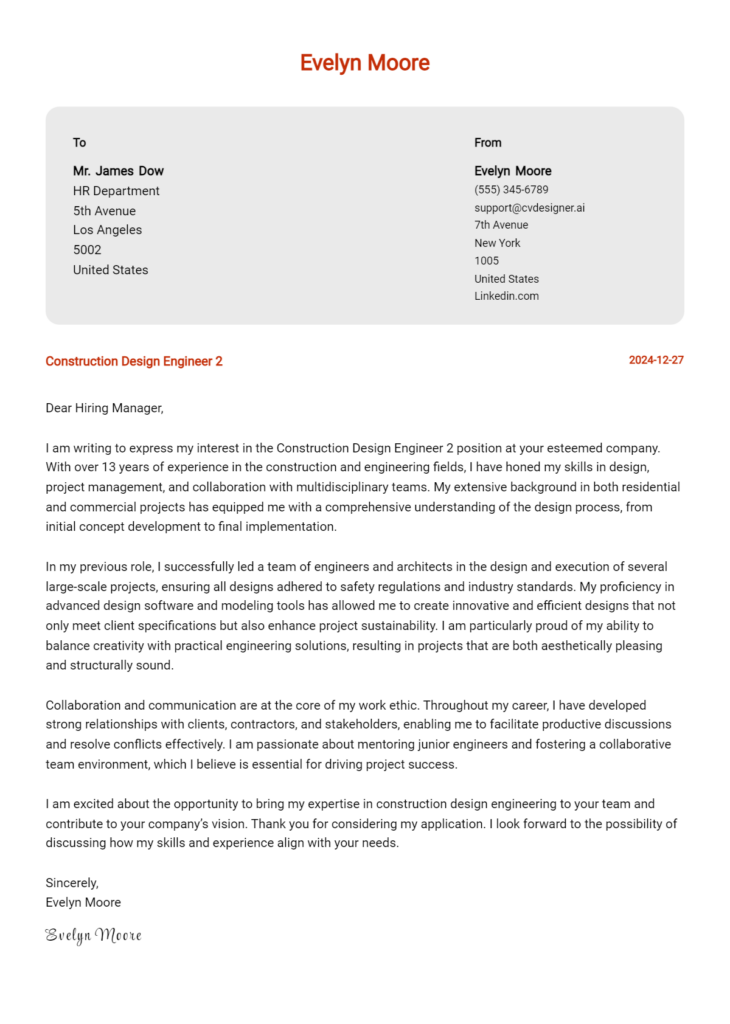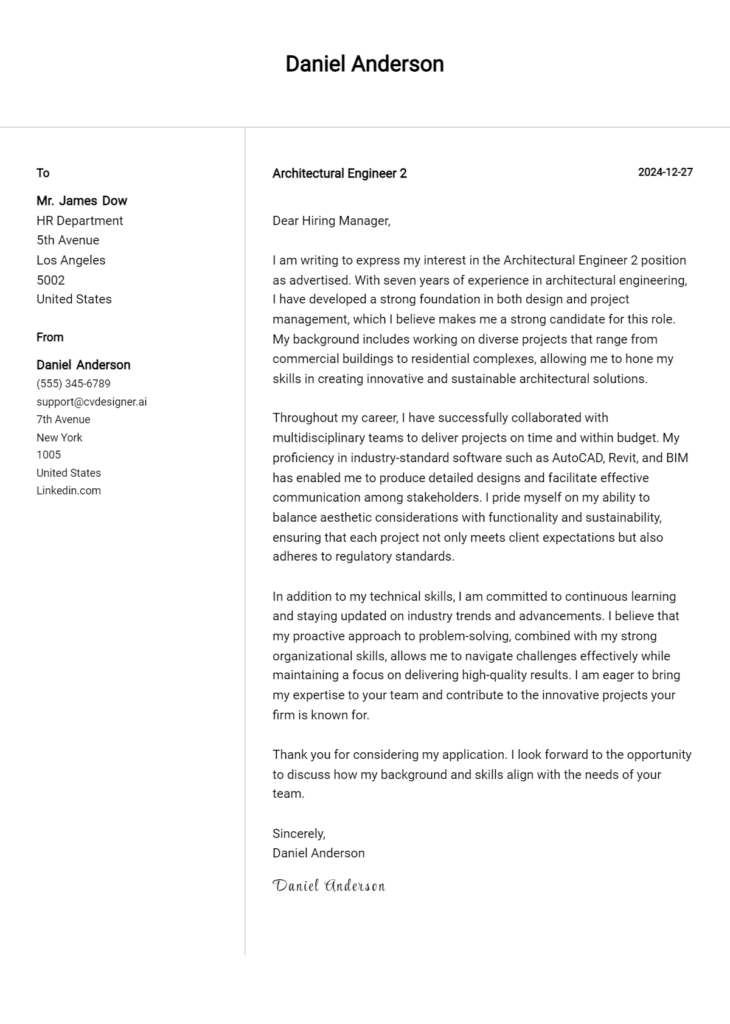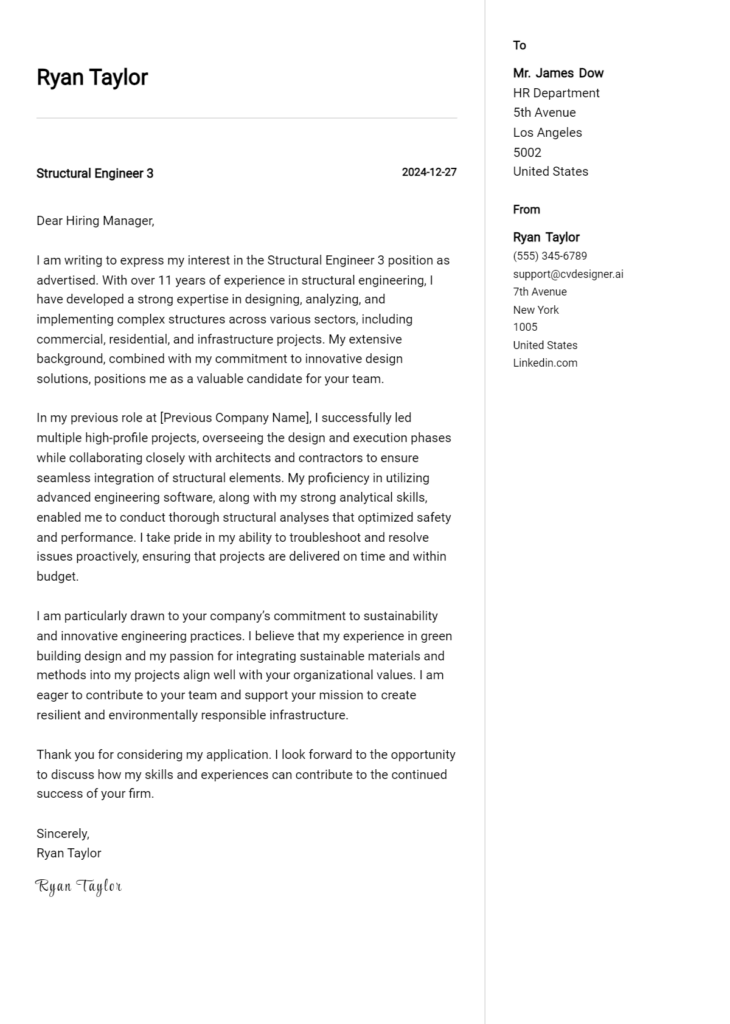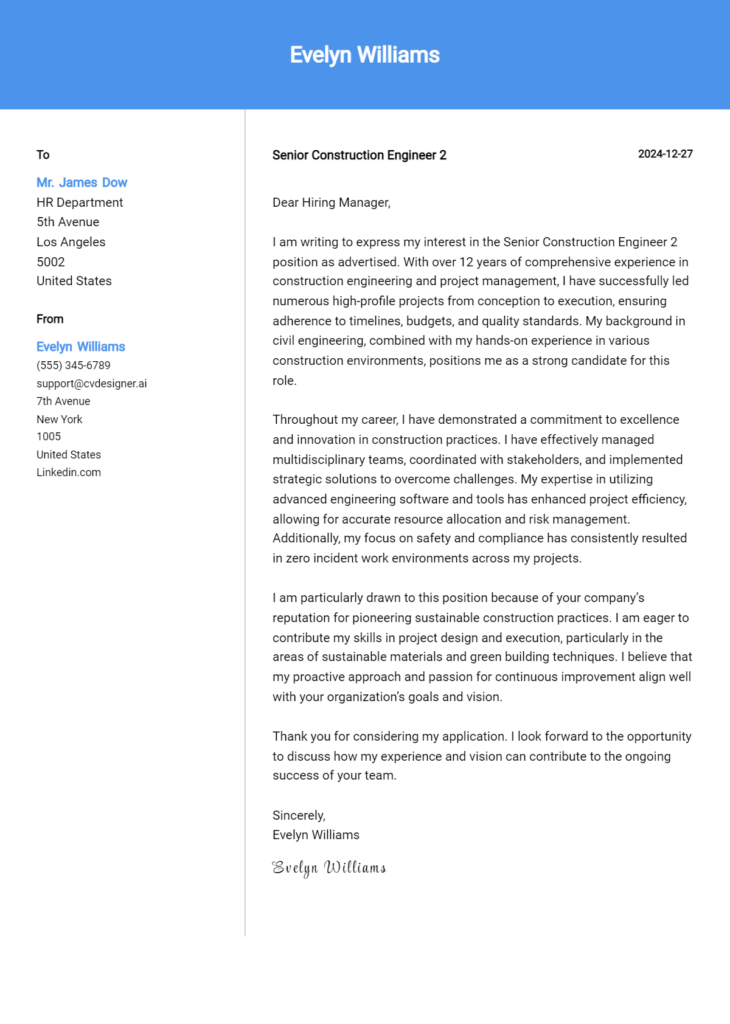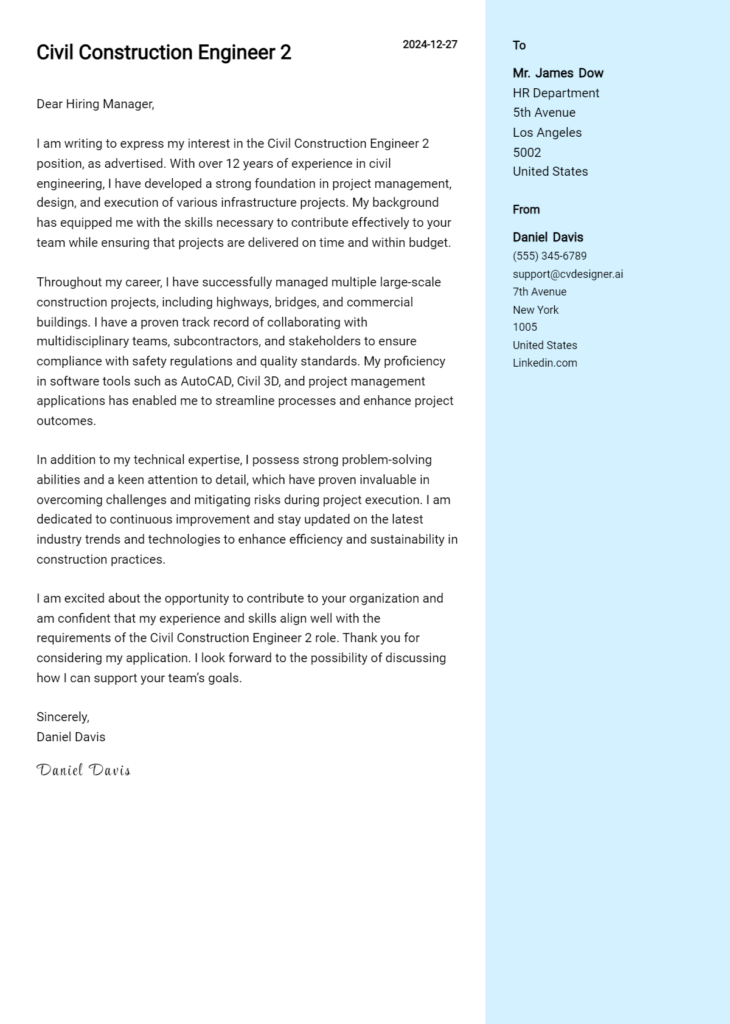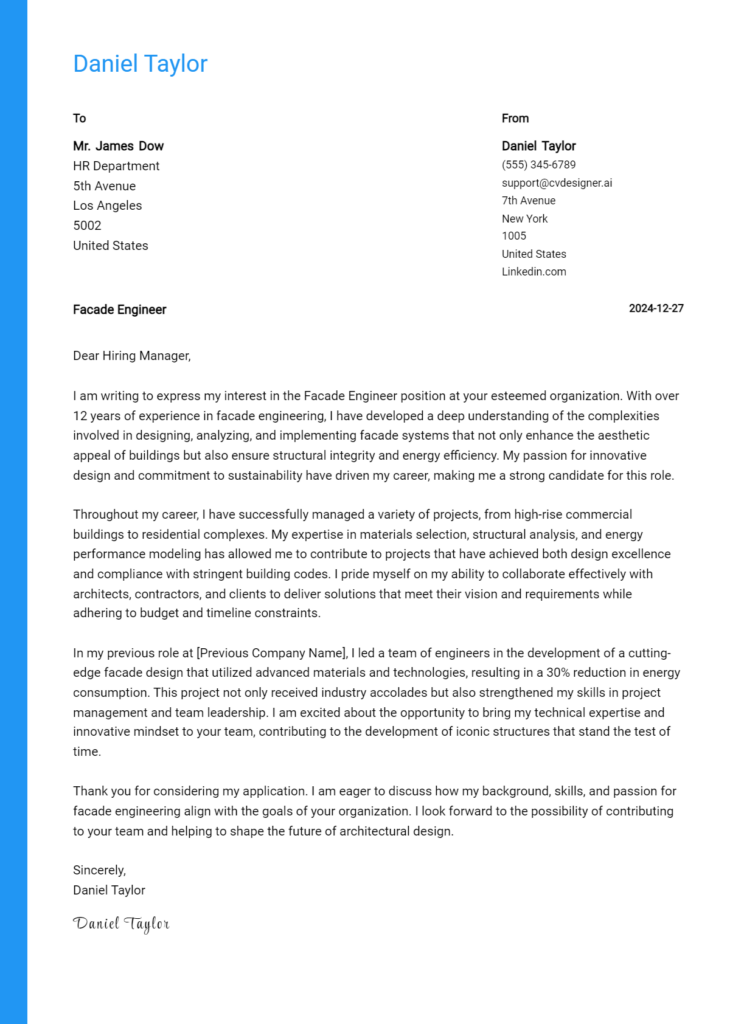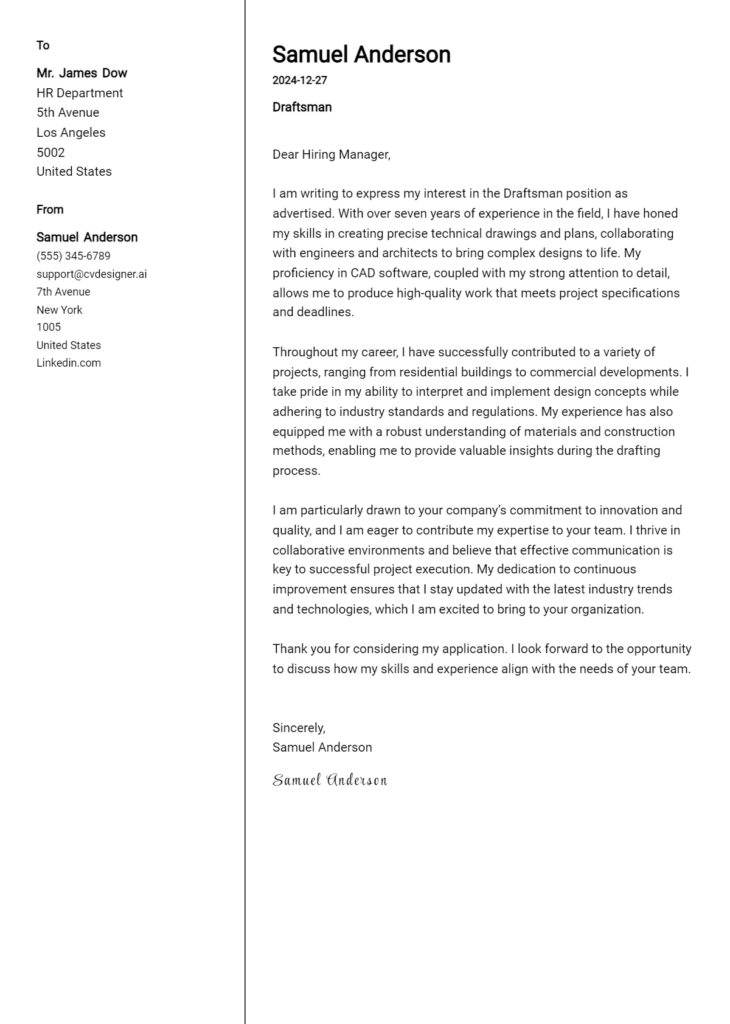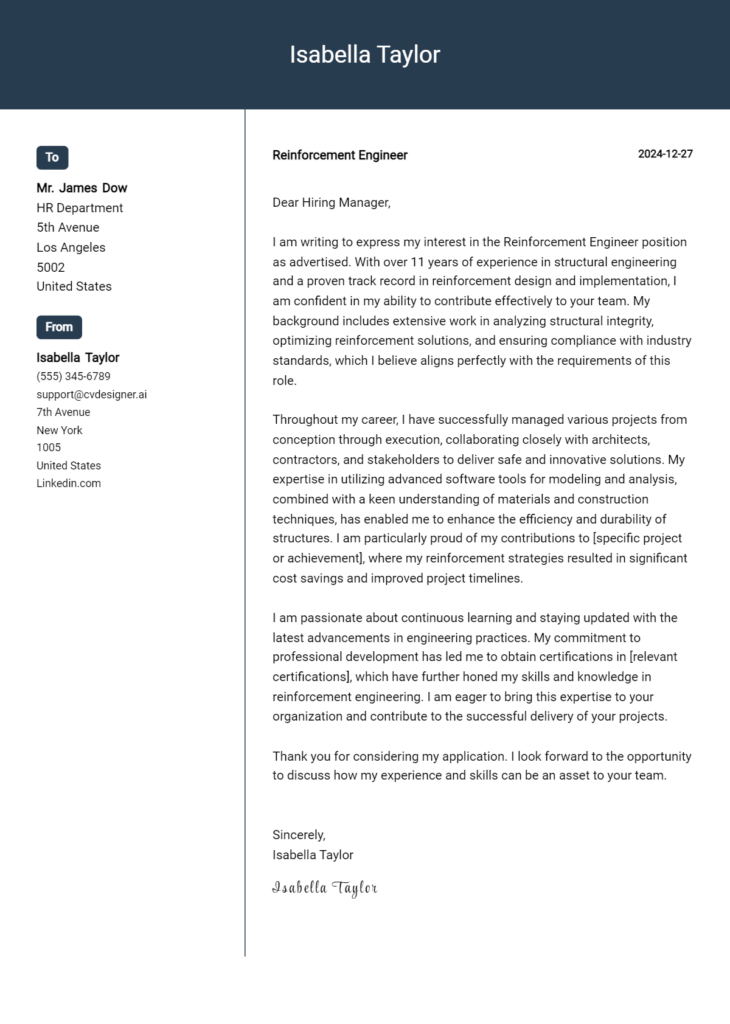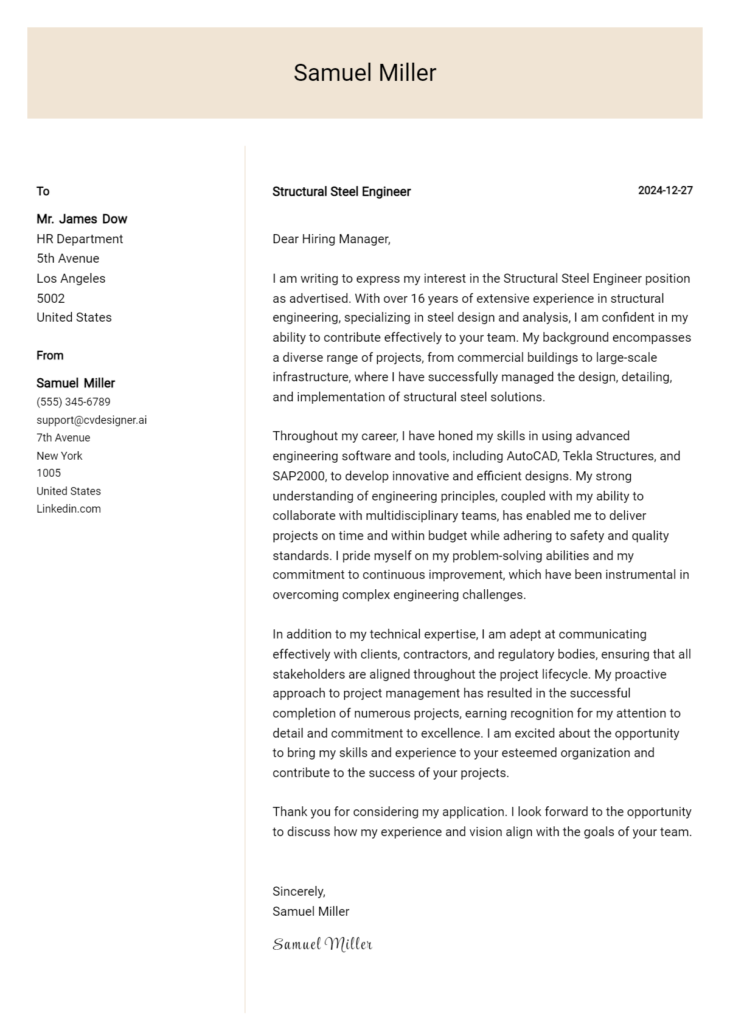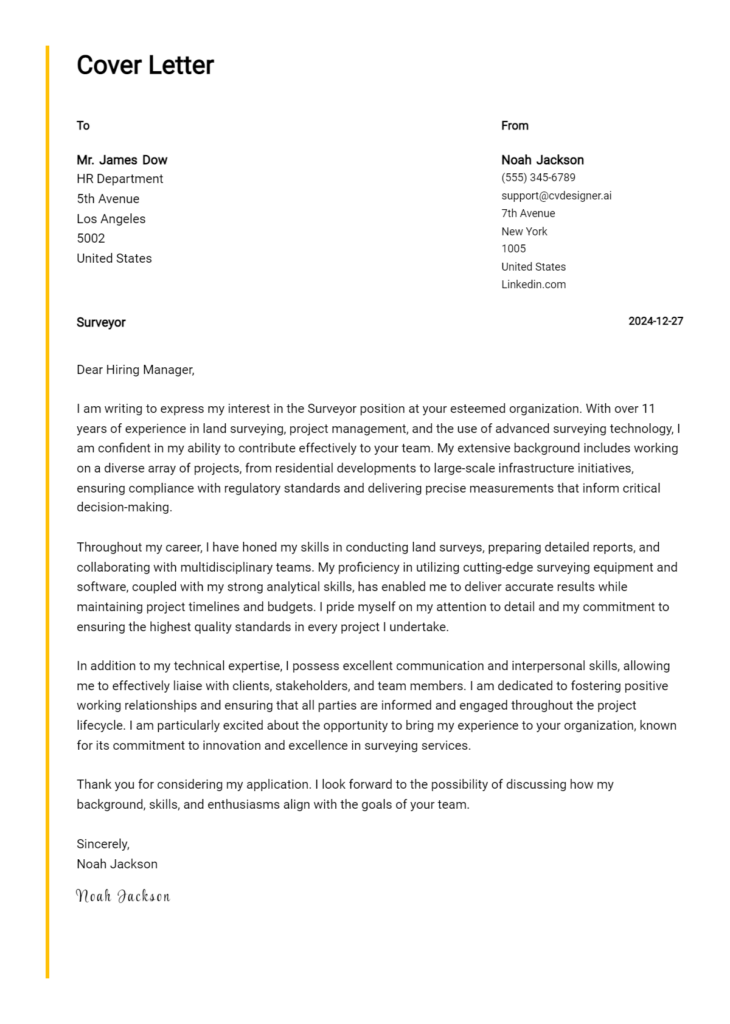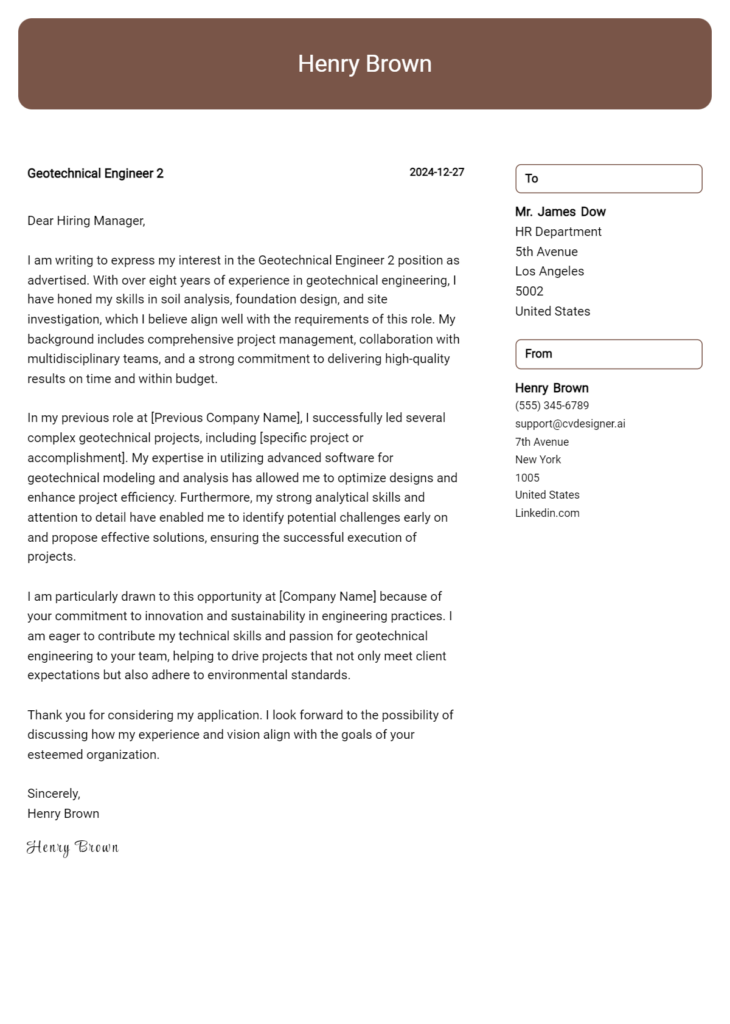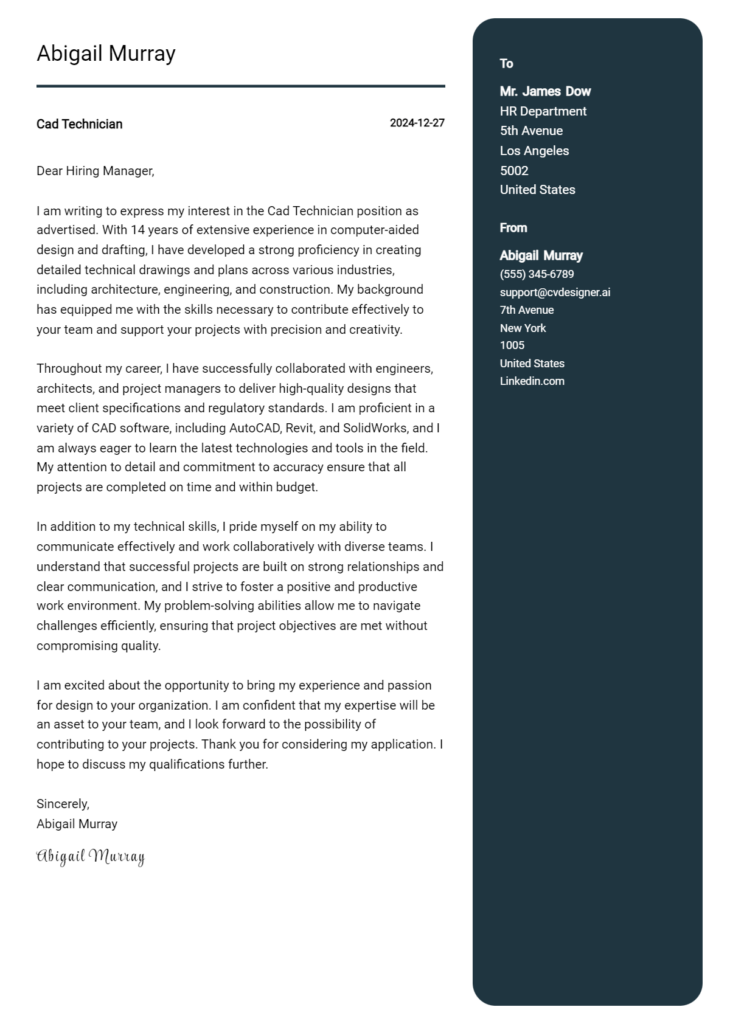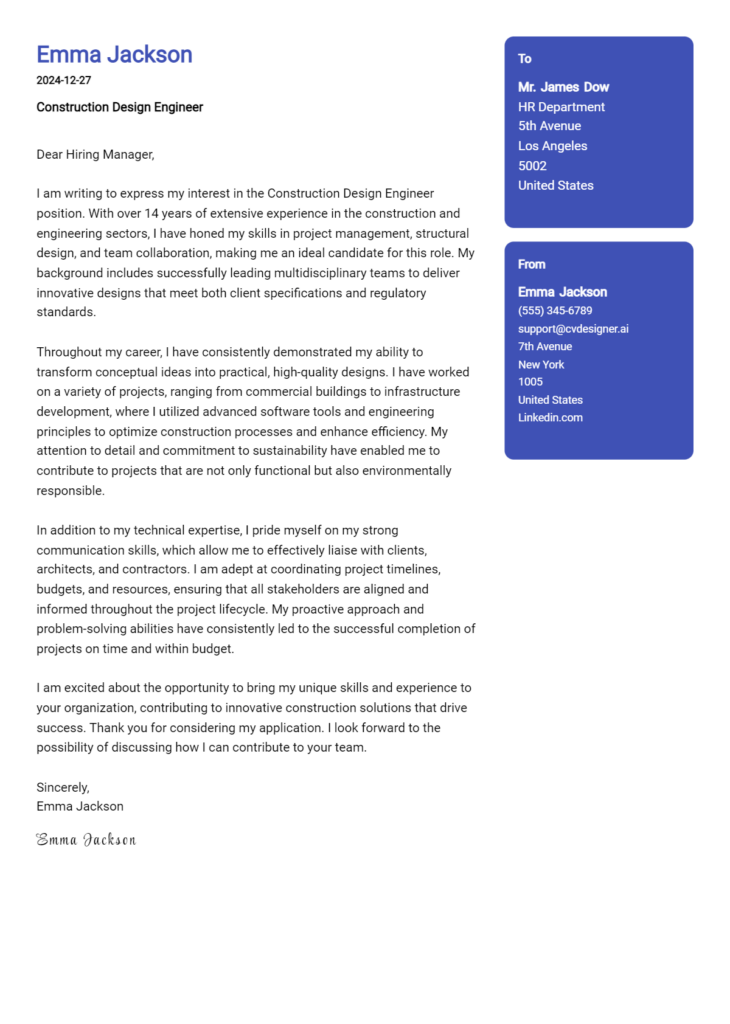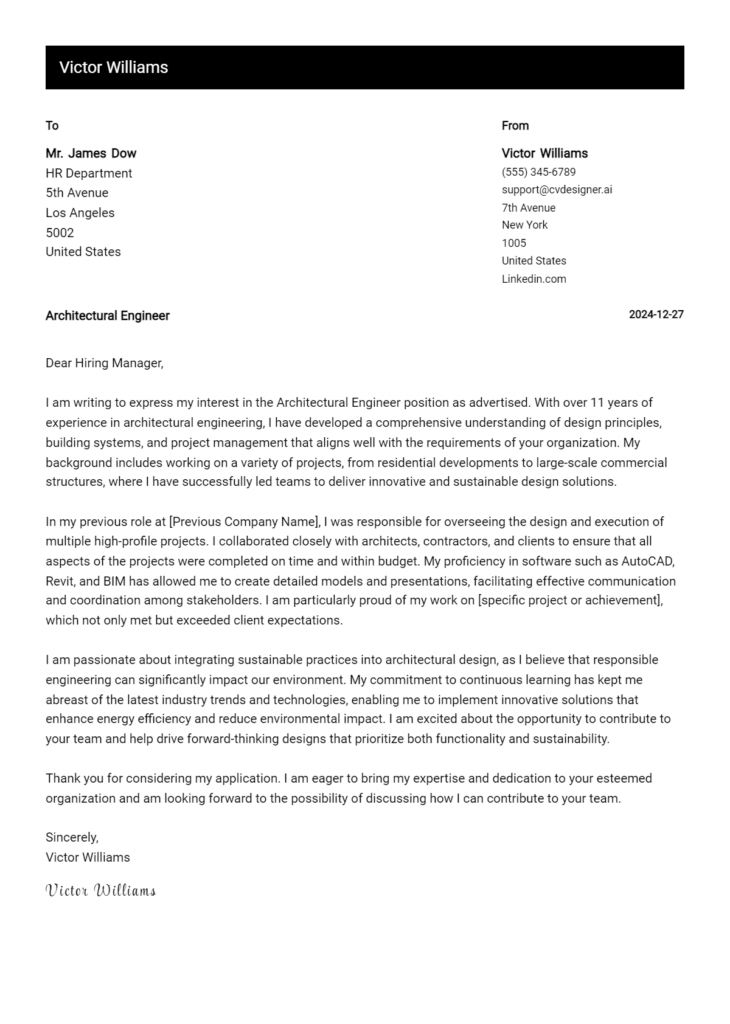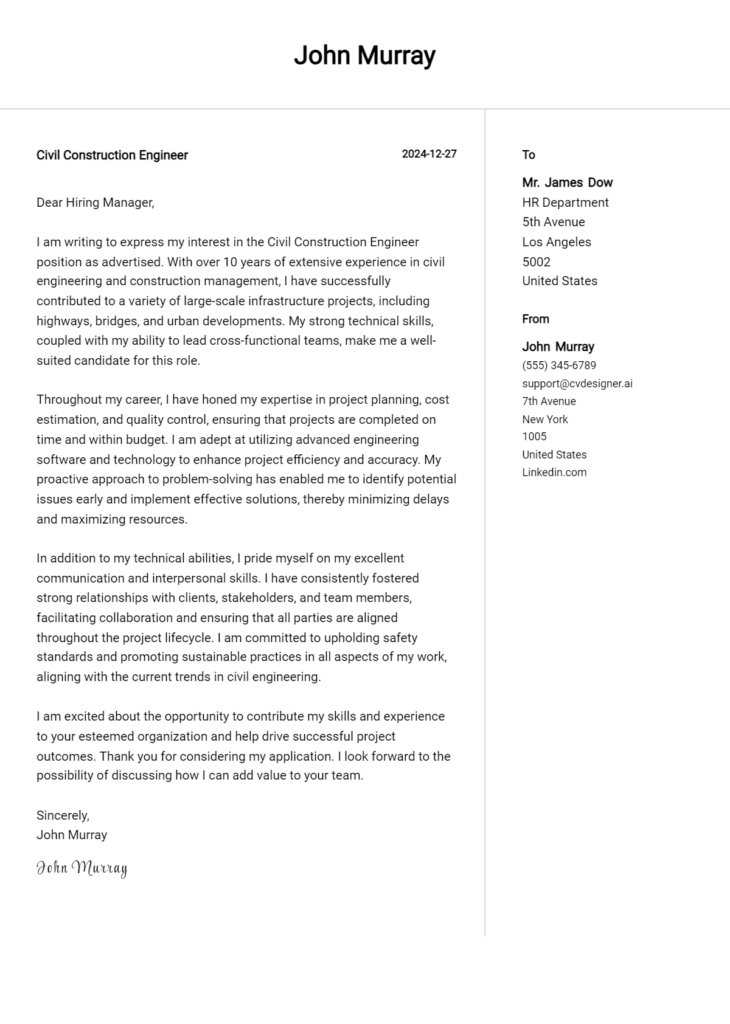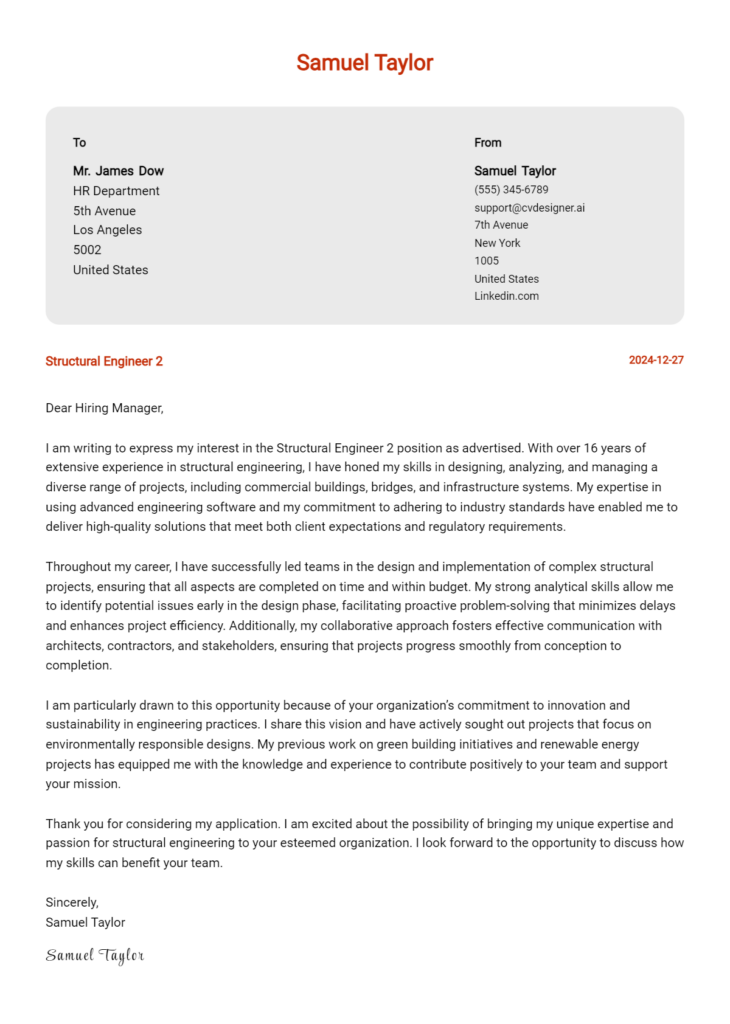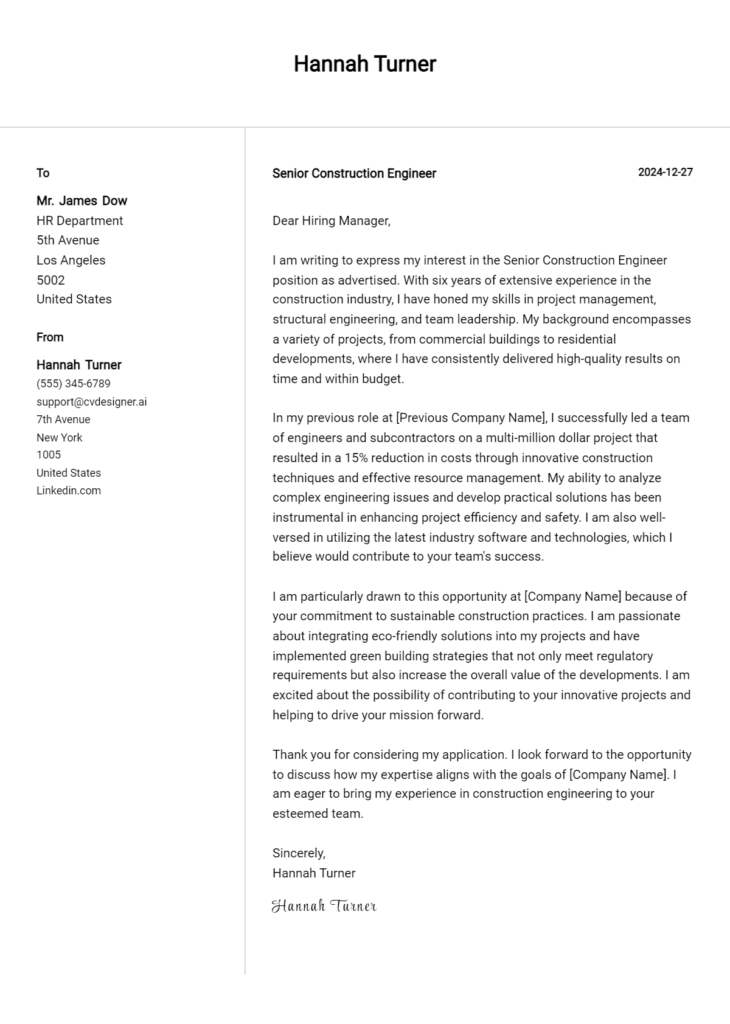Reinforcement Engineer 2 Cover Letter Examples
Explore additional Reinforcement Engineer 2 cover letter samples and guides and see what works for your level of experience or role.
How to Format a Reinforcement Engineer Cover Letter?
Crafting a compelling cover letter is essential for a Reinforcement Engineer, as it serves as your first opportunity to impress potential employers. The way you format your cover letter not only showcases your technical abilities but also reflects your understanding of engineering principles and attention to detail—qualities that are paramount in the field of reinforcement engineering. A well-structured cover letter can effectively communicate your qualifications and enthusiasm for the position, setting you apart from other candidates.
In this guide, we will outline the key components of a professional cover letter, including:
- Cover Letter Header
- Cover Letter Greeting
- Cover Letter Introduction
- Cover Letter Body
- Cover Letter Closing
Each section is crucial for emphasizing your skills and professionalism as a Reinforcement Engineer. Let’s delve into each part and explore how to make your cover letter stand out in the competitive engineering landscape.
Importance of a Cover Letter Header for a Reinforcement Engineer
The header of a cover letter is a crucial component that sets the tone for your application. It serves as the first point of contact between you and the potential employer, conveying professionalism and attention to detail. A well-structured header should include your contact information, the date, and the recipient's details, ensuring clarity and easy navigation for the reader. This not only demonstrates your organizational skills but also ensures that your application is taken seriously. A strong header can create a positive first impression, while a weak one may lead to confusion or a lack of interest from the hiring manager.
Strong Example
John Doe 123 Main St City, State, ZIP Email: john.doe@example.com Phone: (123) 456-7890 October 1, 2023 Jane Smith HR Manager ABC Engineering Firm 456 Corporate Blvd City, State, ZIP
Weak Example
John Doe john.doe@example.com 10/1/23 To Whom It May Concern
The Importance of the Cover Letter Greeting
The greeting in a cover letter is your first opportunity to make a positive impression on the hiring manager. It sets the tone for the entire letter and reflects your professionalism and attention to detail. A personalized greeting, which addresses the hiring manager by name, demonstrates your earnest interest in the position and shows that you have taken the time to research the company and its team. Avoiding generic greetings, such as "To Whom It May Concern," is crucial, as they can come off as impersonal and may suggest a lack of effort. If you can't find the name of the hiring manager, consider reaching out to the company or checking their website or LinkedIn page. This small step can make a significant difference in how your application is perceived.
Strong Greeting Example
Dear Ms. Johnson,
Weak Greeting Example
To Whom It May Concern,
The Importance of a Well-Crafted Cover Letter Introduction for a Reinforcement Engineer
A compelling cover letter introduction is crucial for a Reinforcement Engineer, as it sets the tone for the entire application. This opening paragraph should not only grab the hiring manager's attention but also clearly express the candidate's enthusiasm for the role. It's an opportunity to briefly highlight key skills or achievements that align with the job requirements, making it easier for the reader to see the applicant's potential value to the company. A strong introduction can differentiate a candidate from the rest and pave the way for a successful application.
Strong Example
Dear [Hiring Manager's Name], I am excited to apply for the Reinforcement Engineer position at [Company Name], where my extensive experience in structural analysis and innovative reinforcement methods can contribute to your ambitious projects. With over five years in the industry, I successfully led a team that improved the structural integrity of a major bridge project, resulting in a 20% increase in load capacity while adhering to strict safety standards. My passion for engineering excellence and my commitment to driving efficiency make me a perfect fit for your team.
Weak Example
Dear [Hiring Manager's Name], I am writing to apply for the Reinforcement Engineer position. I have done some engineering work and think I would be good for this job. I know how to use some software and have worked on a few projects before.
Purpose of the Cover Letter Body for a Reinforcement Engineer
The cover letter body for a Reinforcement Engineer is crucial as it serves to illustrate the candidate's relevant skills, professional experiences, and the unique value they can bring to the company. This section should effectively highlight specific projects or accomplishments that demonstrate the candidate’s technical expertise in reinforcement design, analysis, and application in construction projects. By showcasing measurable achievements, such as successful project completions on time and within budget, or innovative solutions implemented in challenging scenarios, the candidate can create a compelling narrative that aligns their qualifications with the needs of the employer.
Strong Example
I am excited to apply for the Reinforcement Engineer position at XYZ Construction. In my previous role at ABC Engineering, I successfully led a team on the high-profile City Bridge project, where we implemented advanced reinforcement techniques that improved the structure's durability by 30%. My proactive approach to integrating innovative materials not only reduced costs by 15% but also earned the project a sustainability award. I am adept at using industry-standard design software such as AutoCAD and SAP2000, which I utilized extensively to optimize reinforcement layouts, ensuring compliance with local building codes and safety regulations.
Weak Example
I am applying for the Reinforcement Engineer position. I have some experience in engineering and I think I would be good for this job. At my last job, I worked on a few projects, but I don’t remember the details. I know how to use some software, and I have a degree in engineering. I believe I could help your company.
Importance of the Cover Letter Closing for a Reinforcement Engineer
The closing paragraph of a cover letter is crucial as it encapsulates your qualifications and reiterates your enthusiasm for the position. It serves as a final opportunity to leave a strong impression on the hiring manager, encouraging them to take the next step in the hiring process, such as reviewing your resume or scheduling an interview. A well-crafted closing can effectively summarize your skills and express your eagerness for the role, while a weak closing might miss these points, failing to engage the reader or prompting them to overlook your application.
Strong Example
Thank you for considering my application for the Reinforcement Engineer position. With my extensive background in structural analysis and my commitment to innovative design solutions, I am excited about the opportunity to contribute to your team. I believe my experience aligns well with the requirements of the role, and I am eager to bring my expertise in reinforcement strategies to your esteemed company. I look forward to the possibility of discussing my application further and am available for an interview at your earliest convenience.
Weak Example
I hope you like my resume. I really want the job, so please think about it. Let me know if you want to talk or something. Thanks.
These tips will assist candidates in crafting an effective cover letter for a Reinforcement Engineer position, highlighting the essential skills and attributes that employers seek. A well-structured cover letter not only showcases your technical prowess but also emphasizes your problem-solving capabilities, knowledge of the Software Development Life Cycle (SDLC), teamwork experience, and a commitment to continuous learning. With these aspects in focus, you can create a compelling narrative that captures the attention of hiring managers.
Tips for Writing a Cover Letter as a Reinforcement Engineer
Showcase Your Technical Skills
Begin your cover letter by clearly outlining your technical competencies relevant to reinforcement engineering, such as proficiency in programming languages, frameworks, and tools. Use specific examples of projects where you effectively applied these skills, demonstrating your ability to contribute to the team right away. Tailoring your technical expertise to the job description will make your application stand out.Emphasize Problem-Solving Abilities
Reinforcement Engineers often face complex challenges. Highlight your problem-solving skills by providing examples of how you've successfully navigated difficult situations in previous roles. Discuss a specific problem you encountered, the steps you took to resolve it, and the positive outcome that followed. This approach not only showcases your analytical skills but also your resilience.Demonstrate Knowledge of the SDLC
Familiarity with the Software Development Life Cycle is crucial for a Reinforcement Engineer. In your cover letter, mention your understanding of different phases of the SDLC and how you have applied this knowledge in past projects. This demonstrates your ability to work within a structured framework and your commitment to delivering high-quality software solutions.Highlight Teamwork and Collaboration
Working effectively in teams is essential in engineering roles. Share experiences that illustrate your ability to collaborate with colleagues, stakeholders, and clients. Whether it’s participating in brainstorming sessions or working on cross-functional teams, emphasize your communication skills and how you contribute to a positive team environment.Express a Passion for Continuous Learning
The field of reinforcement engineering is constantly evolving. Convey your enthusiasm for continuous learning by mentioning any recent courses, certifications, or self-study initiatives you have pursued. This not only shows your commitment to professional development but also your readiness to adapt to new technologies and methodologies.
By integrating these elements into your cover letter, you can effectively convey your qualifications and passion for the role. For additional resources, consider utilizing cover letter templates or a cover letter builder to create a polished and professional application.
Common Mistakes to Avoid in a Reinforcement Engineer Cover Letter
Crafting a compelling cover letter is vital for standing out in the competitive job market for Reinforcement Engineers. Avoiding common mistakes can significantly enhance your chances of making a positive impression. Here are some pitfalls to watch out for:
Generic Content: Many candidates use a one-size-fits-all approach. Tailor your cover letter specifically to the job and company by highlighting relevant skills and experiences.
Lack of Structure: A poorly formatted cover letter can be off-putting. Follow a clear cover letter format to ensure readability and professionalism.
Excessive Length: Overly long cover letters can lose the reader's attention. Keep it concise—ideally one page—focusing on key accomplishments.
Ignoring Technical Skills: As a Reinforcement Engineer, neglecting to showcase your technical expertise can be detrimental. Be sure to include specific skills and projects that demonstrate your proficiency.
Typos and Grammatical Errors: Simple mistakes can undermine your professionalism. Always proofread your cover letter or consider using tools to check for errors.
Lack of Enthusiasm: A cover letter should convey your passion for the role and industry. Use positive language and express your excitement about the opportunity.
Failure to Include a Call to Action: Conclude your letter with a strong call to action, such as expressing your desire for an interview. This shows initiative and eagerness to discuss your application further.
By steering clear of these mistakes and utilizing resources like cover letter examples, you can create a powerful cover letter that captures the attention of hiring managers in the field of reinforcement engineering.
Cover Letter FAQs for Reinforcement Engineer
What should I include in my cover letter as a Reinforcement Engineer?
In your cover letter, you should highlight your technical expertise in reinforcement engineering, including your knowledge of materials, structural analysis, and design principles. Mention specific projects where you successfully implemented reinforcement techniques, showcasing your problem-solving skills. Include your educational background and any relevant certifications, such as those from professional engineering organizations. It’s also essential to demonstrate your ability to work collaboratively in multidisciplinary teams and your understanding of safety and regulatory standards. Tailor your cover letter to the specific job by mentioning the company’s projects or values that resonate with you, showing that you’ve researched and are genuinely interested in the position.
How can I make my cover letter stand out?
To make your cover letter stand out, focus on your unique experiences and accomplishments in reinforcement engineering. Use quantifiable achievements, such as improvements in structural integrity or cost savings on projects you’ve worked on. Start with a strong opening statement that captures the hiring manager’s interest, and maintain a professional yet engaging tone throughout. Incorporate industry-specific language to demonstrate your expertise, but avoid jargon that may confuse the reader. Additionally, express your enthusiasm for the role and the company, showing how your values align with theirs. Finally, proofread carefully to eliminate any errors, as attention to detail is critical in engineering roles.
How long should my cover letter be?
Your cover letter should ideally be one page long, consisting of three to four paragraphs. This length allows you to provide enough detail about your qualifications and experiences without overwhelming the reader. Aim for around 250-400 words to ensure clarity and conciseness. Each paragraph should serve a specific purpose: the introduction should convey your interest in the position, the body paragraphs should elaborate on your relevant skills and experiences, and the conclusion should reaffirm your enthusiasm for the role and invite further discussion. Keeping your cover letter succinct and focused will help maintain the hiring manager's attention.
Should I address my cover letter to a specific person?
Yes, addressing your cover letter to a specific person is highly recommended. Doing so demonstrates your initiative and genuine interest in the position. You can usually find the hiring manager's name on the company’s website, LinkedIn, or job posting. If the name is not available, consider calling the company’s HR department to inquire. Using "Dear Hiring Manager" is a fallback option, but personalizing your greeting adds a touch of professionalism. In your cover letter, refer to the person by their title and last name (e.g., "Dear Mr. Smith") to convey respect. This personalized approach can help you make a positive first impression.
Build your Cover Letter in minutes
Use an AI-powered cover letter builder and have your letter done in 5 minutes. Just select your template and our software will guide you through the process.


